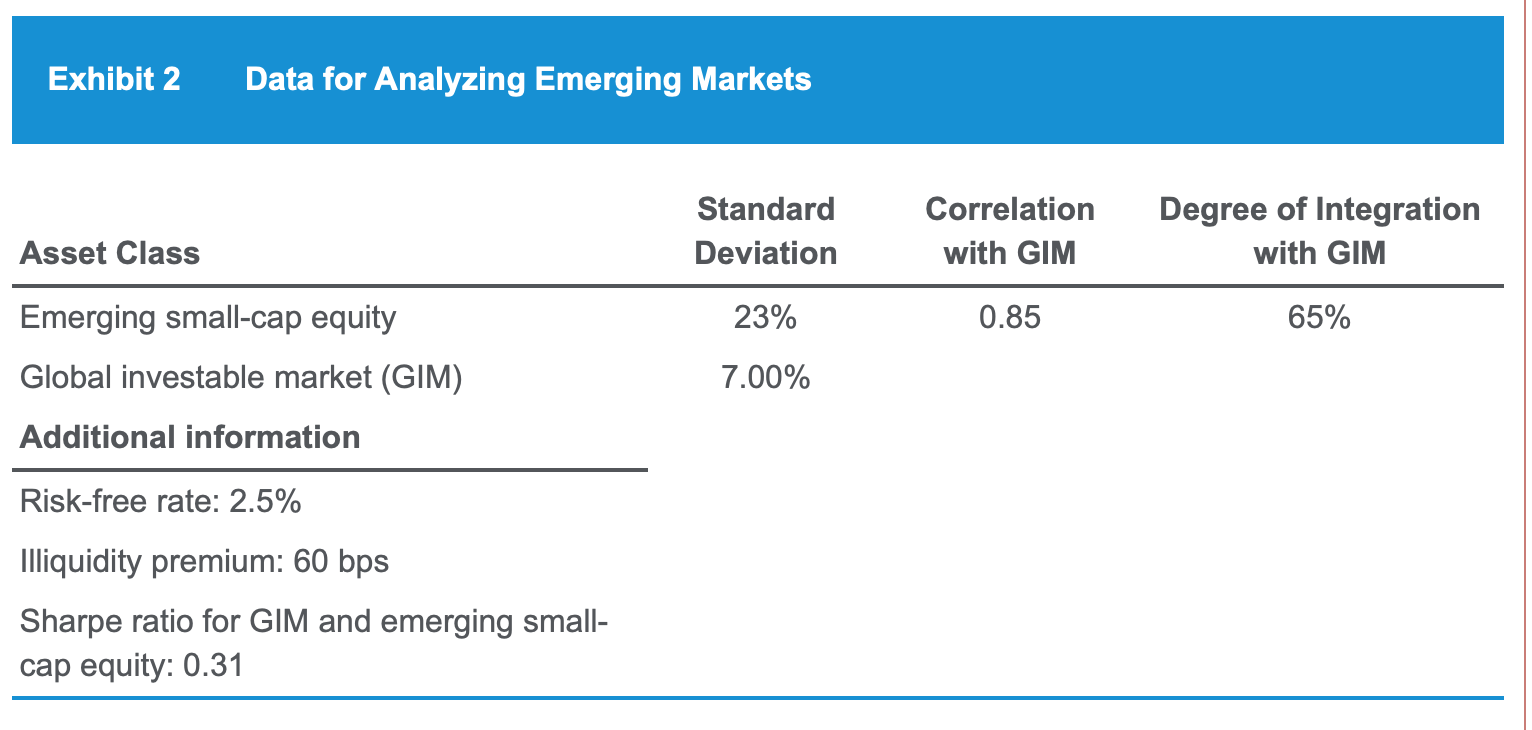To assess the attractiveness of emerging market equities, Fiske suggests that they use the data in Exhibit 2 and determine the expected return of small-cap emerging market equities using the Singer–Terhaar approach.

Using the data in Exhibit 2 and Fiske’s suggested approach, the forecast of the expected return for small-cap emerging market equities is closest to:
- 8.9%.
- 9.9%.
- 9.5%.
答案:C is correct. The Singer and Terhaar approach for determining the expected return on an asset class involves determining the risk premium arising from systematic risk as a weighted average of the risk premiums arising from a fully integrated market and fully segmented market, where the weights for the fully integrated market is the degree of integration of the markets.
- The risk premium for the fully integrated market is given by:
- RPi = σiρi,M(RPM/σM) where (RPM/σM) is the Sharpe ratio for the world market portfolio
- The risk premium for the fully segmented market is given by: RPi = σi(RPM/σM)
- In addition, if there are market imperfections such as illiquidity premiums, they must be added in
- Finally, the expected return on the asset class is determined by adding these risk premiums to the risk-free rate, in the classical CAPM fashion.
Step 1Systematic risk premium in fully integrated market
Risk Premium: RPi = σiρi,M(RPM/σM)
= [23% × 0.85 × 0.31]
= 6.06%
Step 2Systematic risk premium in fully segmented market
Risk Premium: RPi = σi(RPM/σM)
= [23% × 0.31]
= 7.13%
Step 3Weight systematic risk premiums by degree of integration:
0.65 × 6.06 + 0.35 × 7.13 = 6.43%
Step 4Add the illiquidity premium
6.43% + 0.60% = 7.03%
Step 5Add the risk-free rate:
2.5% + 7.03% = 9.53%




